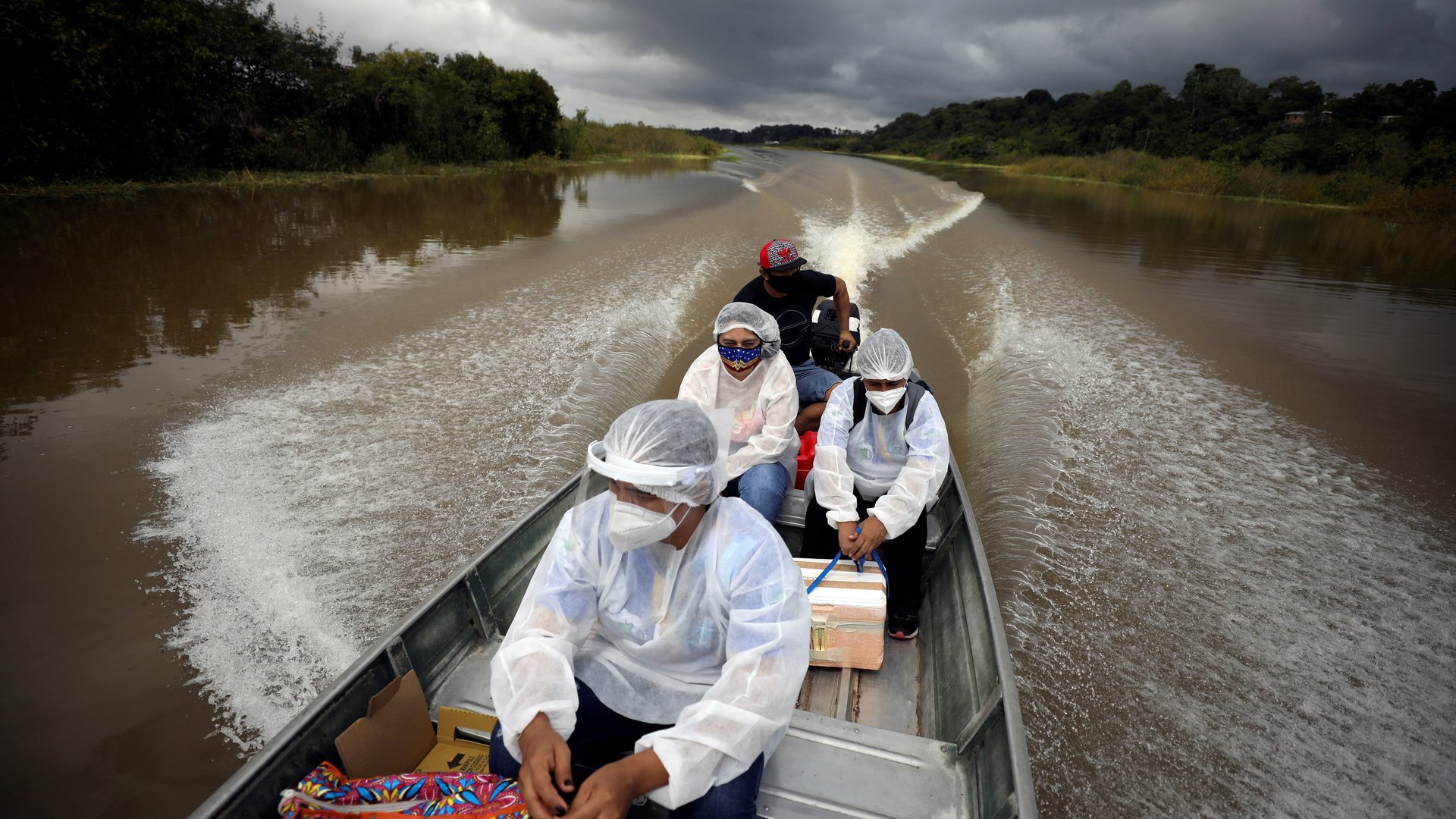AstraZeneca’s vaccine is poised to become the leader in most of the world
While wealthy countries chase supplies of Pfizer’s and Moderna’s highly advanced mRNA vaccines, Oxford-AstraZeneca’s jab is set to take over the world.


While wealthy countries chase supplies of Pfizer’s and Moderna’s highly advanced mRNA vaccines, Oxford-AstraZeneca’s jab is set to take over the world.
By the first half of 2021, about 340 million doses of the AstraZeneca vaccine will be distributed to 136 countries through Covax, a platform led by the World Health Organization (WHO) and Gavi (an organization that grants developing countries access to vaccines by subsidizing their cost). By contrast, the coalition will only distribute 1.2 million Pfizer vaccine doses, and only 18 countries will receive them.
Although AstraZeneca’s vaccine has lower stated efficacy than Pfizer or Moderna’s, there are several reasons why it’ll play such a major role in the eventual end of the pandemic. The vaccine is cheaper to produce and purchase—at $4 a dose, compared to about $20 per dose for Pfizer and $10 to $50 for Modena. And, just as crucially, it’s easier to transport and deliver, as it doesn’t have the cold-storage requirements of the mRNA vaccines.
Most United Nations member states, as well as the Palestinian territories and the Vatican, belong to Covax. This includes the US, which had been an outlier among wealthy countries by staying away during the Donald Trump administration, and joined the platform on the first day of Joe Biden’s administration.
Through Covax, countries joined forces to finance Covid-19 vaccine development; in exchange, they get the option to procure, through the platform, vaccines for at least 20% of their population.
The premise of the platform is equity in vaccine access regardless of the country’s wealth, as a way to accelerate the creation of global herd immunity against Covid-19. This means that wealthy countries contributed more money—the UK gave about $600 million, and the US pledged $4 billion—effectively paying for doses for poor ones.
Yesterday (Feb. 5), Covax published its plan for distributing its first doses. As wealthy countries have mostly made independent procurement deals, Covax’s first efforts are directed to middle- and low-income countries, with a few exceptions, such as Canada, or Monaco, which have opted to take their allocated shares.
AstraZeneca is also supplying vaccines independently from the Covax platform, including 2 million doses a week to the UK and a planned 400 million doses to the EU this year.
Covax, meanwhile, is planning to distribute the doses according to population size, and aims to cover at least 3.3% of people in participating member countries in the next couple of months. India, for instance, will receive nearly 100 million doses to begin with, while Afghanistan gets about 3 million, and Monaco 7,200.